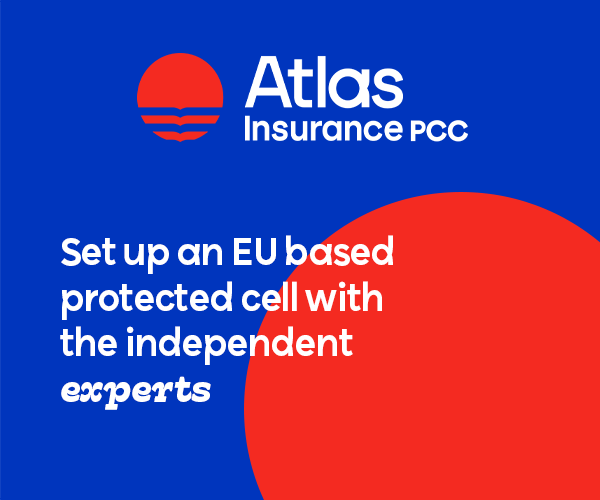A number of large Canadian companies, especially those engaged in the energy and mining industries, have long used captive arrangements to fund their corporate retentions, and some have expanded their use of captive insurance companies to access cover for risks that could not be transferred to third-party insurers
A number of large Canadian companies, especially those engaged in the energy and mining industries, have long used captive arrangements to fund their corporate retentions, and some have expanded their use of captive insurance companies to access cover for risks that could not be transferred to third-party insurers.
As large companies become more sophisticated in managing risk and fully understand their business, operational, legal and market risk, they increasingly prefer to participate in their risk management programme by retaining risk, rather than purchasing traditional risk transfer insurance. This strategy enables them to benefit by having more control over their programmes and by being able to access international insurers and reinsurers to purchase insurance over the captive’s retentions.
Recognising the many benefits of this strategy, medium-sized and some smaller companies have shown much interest in recent years in doing the same, particularly to address the cost of risk transfer premiums. However, like larger companies, these small- to medium-sized companies are often driven to set up a captive by a need to address risks not covered by traditional insurance.
I applaud their entrepreneurial spirit. I have received many phone calls over the years from interested parties seeking information on what to do next. Generally, these calls are from middle-market brokers that do not have a captive department in place. I welcome these discussions as they are always interesting, and, I hope, informative for the broker or risk manager. Their success will be a statement to their diligence, research, attention to detail, and a wide variety of experts with whom they avail themselves.
Once a decision is made to pursue a captive strategy, the next step will be securing approval from the company’s senior management to fund a feasibility study, which will focus on determining the optimal structure for the captive programme. The study will consider a number of factors, including loss experience, risk retention appetite, and regulatory considerations. Ideally, the feasibility study provider will deliver an analysis encompassing a comprehensive summary report and recommendations for all aspects of a captive programme, including:
- Role of captives in today’s insurance market and the advantages and disadvantages of a captive;
- Lines of business to be initially covered by the captive;
- Underwriting considerations, including analysis of proposed attachment and limit points that determine the retained coverage assumed by the captive;
- Actuarial review and loss pick;
- Five-year financial projections including balance sheets and income statements;
- Taxation issues (in conjunction with the client’s tax advisors);
- Capitalisation requirements;
- Shareholding structure in cooperation with the client’s internal and outside counsel;
- Domicile comparison with recommendation, including regulatory requirements; and
- Formation and operations outline of the captive insurance company.
If the feasibility study is compelling, the company may decide to utilise a captive strategy, which can provide many benefits, such as:
- More control over the insurance programme;
- Potential to achieve better excess risk transfer pricing by assuming some of its own risk;
- Ability to access reinsurance markets;
- Ability to invest internationally;
- Improved enterprise risk management experience within the organisation;
- Broadened insurance programme to include coverage not available in the traditional insurance market;
- A heightened focus on loss control procedures across multiple business units;
- Better understanding of the cost of risk at the local operating level; and
- Ability to benefit from favourable loss experience.
If a company cannot insure a risk to a third-party insurance company, the business risk will remain with it. Setting up a captive to insure the risk, thereby managing and financing it more efficiently, can be a better strategy. With time and experience in assuming this risk in a captive arrangement, it is likely that traditional insurers will develop more of an interest in supporting the risk on an excess position. We have seen this many times in the insurance industry.
Coverage, which was once considered uninsurable, becomes of more interest to insurers as they have access to better data and current loss information that provides more underwriting details with which to assess the loss exposure and adequately price the risk. Examples of this increased interest by insurers are environmental covers, employee benefits, and most currently, cyber insurance.
Large possibilities
Many medium-sized and smaller companies can benefit from a ‘rent-a-captive’ structure, also known as a protected cell captive. In this type of programme, a client ‘rents’ a segregated cell within a sponsored captive facility, thereby receiving many of the benefits of a captive without the cost and capital commitment required of a wholly owned captive, as the administrative and management costs are shared with others.
Clients without a captive can experience many of its benefits through participation in AIG’s own captive cell facilities in Bermuda and Vermont.
Many smaller and medium-sized companies choose a cell because it:
- Can provide a cost-effective alternative to captive ownership: cells can be formed quickly with minimal start-up costs; there are no audit, licence, actuarial, or legal fees (all borne by the sponsor); and annual operating expenses are significantly less for a cell than for an owned captive;
- May be a stepping stone to setting up an owned captive, as cells are easily converted into standalone captives;
- Enables participants to realise the benefits of a captive, such as sharing in their underwriting profits, without the full operating costs and commitment of an owned captive;
- Has no board of directors requirement and involves less commitment of management time;
- Can be exited quicker and easier than winding down an owned captive; and
- There is no risk sharing with other cell participants.
Here’s how sponsored cell captives typically work:
- The owner(s) contribute the captive’s statutory capital;
- The client signs a participation agreement defining the rights and obligations of the cell;
- The client posts required collateral to the sponsor;
- Premiums and losses are ceded to the client’s cell in the facility;
- The assets of an individual cell are legally segregated from, and cannot be used to meet, the liabilities of any other cell;
- All regulatory requirements and administrative tasks are carried out by the sponsor of the cell; and
- The profit to the cell facility is premium plus investment income, less claims and expenses.
Not to be underestimated
I think we should be mindful that just because a captive is small, or new, does not mean that it won’t be a great success. The captive business in Canada has grown over the years, and our knowledge has collectively deepened, so that we can impart valuable information to new start-ups.
In the fast-paced world we live in, today’s start-up can quickly become tomorrow’s multinational company. And, a captive can grow with the parent to cover multinational exposures.





